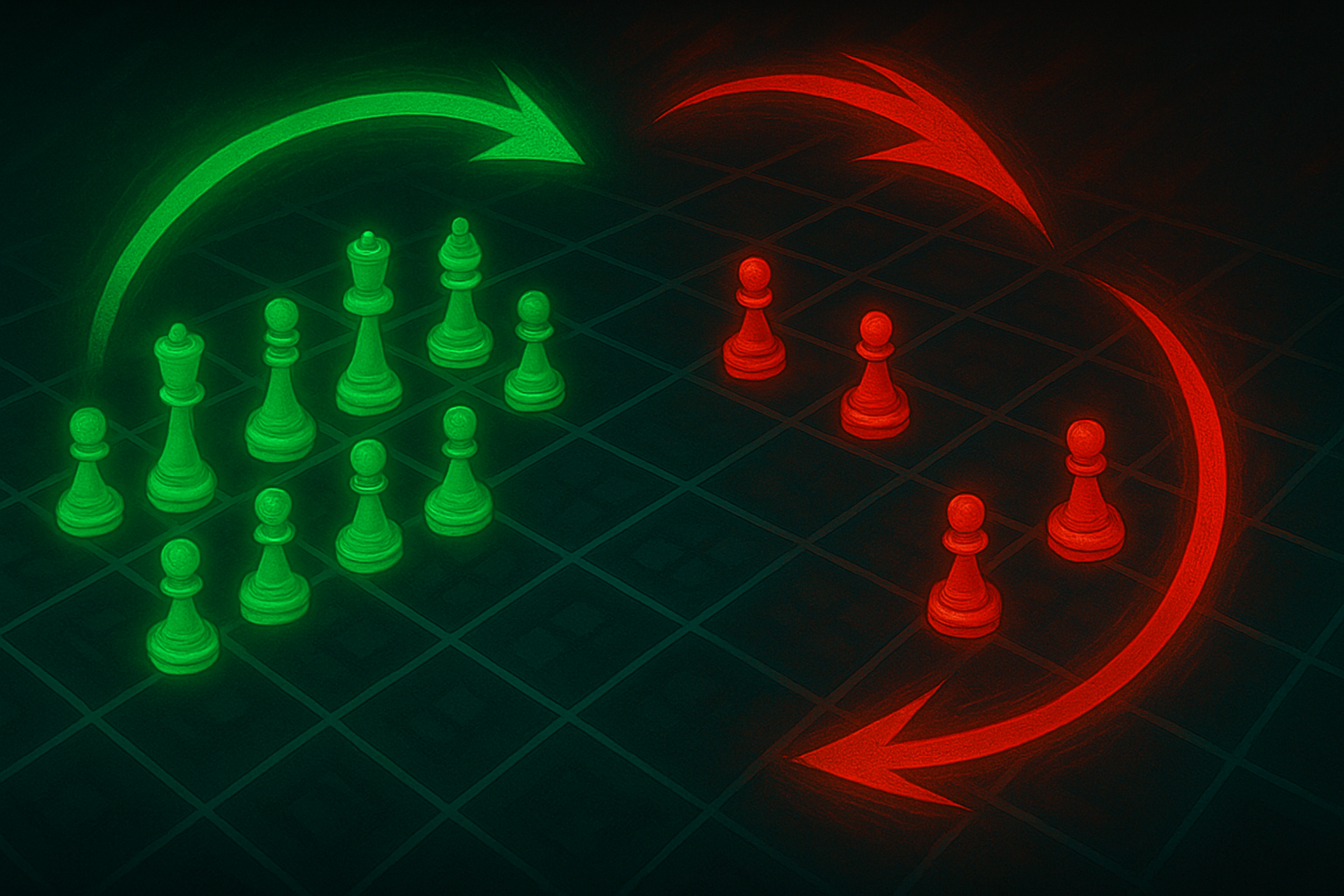
How much you should spend isn’t just about ambition or competition. It’s also shaped by the economic physics of your category. So, how much should your marketing budget be?

Strength that looks effortless is mistaken for ease. When someone handles pressure with composure, it becomes easy for others to assume that the load is light. Their calm becomes an illusion that hides the effort, the discipline, and the strain underneath.

Marketers have spent decades obsessing over “the buyer persona.” Entire frameworks, workshops, and strategy decks revolve around understanding one idealized decision-maker — their pains, motivations, frustrations, and buying triggers. But is it worth the effort?

A go-to-market strategy is one of those concepts everyone thinks they understand until they try to explain it. Years ago, during a conversation with a veteran advertiser, I watched this gap open up in real time. Smart, experienced, deeply talented. But every angle of the discussion circled back to campaigns, creatives, and media buying.

The 95–5 rule has become one of the most widely cited ideas in marketing. It’s often used to justify rigid budget splits, siloed teams, and heavy long-term brand investments. Somewhere along the way, a context-specific heuristic turned into a supposed law of marketing physics.

A product succeeds for one reason above all others — it creates undeniable value for someone. But too often, teams define that value in vague, internal terms.

Before any company can win in the market, it must first win in its own structure. Many businesses fail not because the product is weak — but because the model behind it is unclear, inconsistent, or incomplete. That’s where the Business Model Canvas (BMC) comes in: a blueprint for clarity. It doesn’t tell you what to build — it reveals how everything connects.

Every company wants to grow — but not every company survives the attempt.In the pursuit of expansion, many leaders make the same mistake: they chase every opportunity at once. New products, new markets, new partnerships — all at the same time. And slowly, clarity dissolves.

Markets may look like open fields, but they’re rarely fair fights. Every decision — price, product, positioning — is shaped by unseen pressures. Some come from direct competitors; others from suppliers, buyers, or entirely new entrants changing the terrain.

Every strategist knows that timing is everything. You can have the right product, the right story, and the right execution — but if you move against the wind, even the strongest company stalls. That’s where the PESTEL analysis comes in. It helps you read the weather of the market before you set sail.

In a world where markets move faster than ever, strategy is no longer just about having ideas — it’s about knowing where to place your bets. The SWOT analysis remains one of the simplest yet most powerful frameworks for understanding where your business stands and how it can move forward.

The best battles are the ones you never have to fight. Preventive Attack Doctrine focuses on identifying threats early and neutralizing them before they mature. Rather than reacting to a competitor’s move, you act preemptively to weaken or deter them.

In competitive markets, sometimes you don’t have to out-innovate or out-market your rival.You can win — or at least delay them — by blocking their access to essential resources, channels, or relationships.

In competitive markets, scale is not just about growth — it’s a shield. Global Services is a defensive doctrine where a company leverages its reach, infrastructure, and global presence to make it harder for competitors to challenge its position.

In battle — as in business — the strongest advantage is often not the army you bring, but the ground you hold.Position Defense, as described by Jorge A. Vasconcellos e Sá, is about fortifying your market stronghold so rivals cannot dislodge you. It’s not about being static; it’s about knowing which hilltop is worth defending — and making it unassailable.

Most markets eventually reach a stalemate. Incumbents hold their ground with scale and reputation, challengers copy features, and the battlefield looks like a gridlock. In such a situation, a frontal assault wastes resources, and flanking opportunities are limited. This is where the Differentiated Circle Attack shines.

In most competitive markets, firms are told to differentiate — to find a unique angle, a distinctive niche, a sharper value proposition.But sometimes the battlefield demands the opposite: not to focus, but to overwhelm. This is mastering the Undifferentiated Circle Attack.

A battlecard is more than a sales cheat-sheet.It’s a command document that distills the whole competitive picture — the terrain, the opposing forces, and your own strengths — so you can choose where to engage, when to advance, and when to hold your ground.

But in both war and business, retreat has often been the move that preserved strength, cut losses, and opened the path to future victory. The true mistake is not retreating when the situation demands it.

Counter-attacks are not about picking fights for the sake of it.They are about protecting hard-won ground by demonstrating that attempts to take it will be costly and risky for the aggressor.

In any competitive arena — whether medieval kingdoms or modern markets — the first line of defense isn’t always soldiers at the gate. It’s the gate itself.Leaders who understand this principle build barriers that make entry so costly, slow, or unappealing that rivals think twice before crossing the moat.In strategy, this is called establishing entry barriers — one of the most effective yet least glamorous defensive doctrines.

In competitive markets, not every victory requires a fight.Sometimes, the smartest move is to deter rivals before they even step onto the field. That’s the essence of signaling

When markets mature, the biggest prize often isn’t in finding a new niche — it’s in boxing in an established rival until they have nowhere to run. This is the essence of Encirclement Strategy.

Most strategies teach you to dance around the strong, to sneak through gaps or chip away at the edges. But when the market is ready for change and the incumbent has grown slow, a head-on fight can open the fastest path to relevance and scale. A Frontal Attack isn’t the cleverest doctrine — but it can be the decisive one.

Guerilla strategy isn’t about fighting dirty or cutting corners. It’s about choosing the right fight. The smartest move is often to bypass the main gate entirely.

Competitive advantage isn’t always built in the spotlight.Often, it’s forged on the quiet edges of the market — where incumbents aren’t looking. Netflix’s story reminds leaders: your rival’s greatest strength can also be their blind spot.

There's never been more data, yet it's never been harder to find clarity. Competitors multiply, customer attention is fragmented, and new trends appear overnight. How do you overcome this? Guesswork Is Costly. BrandScout is an investment.